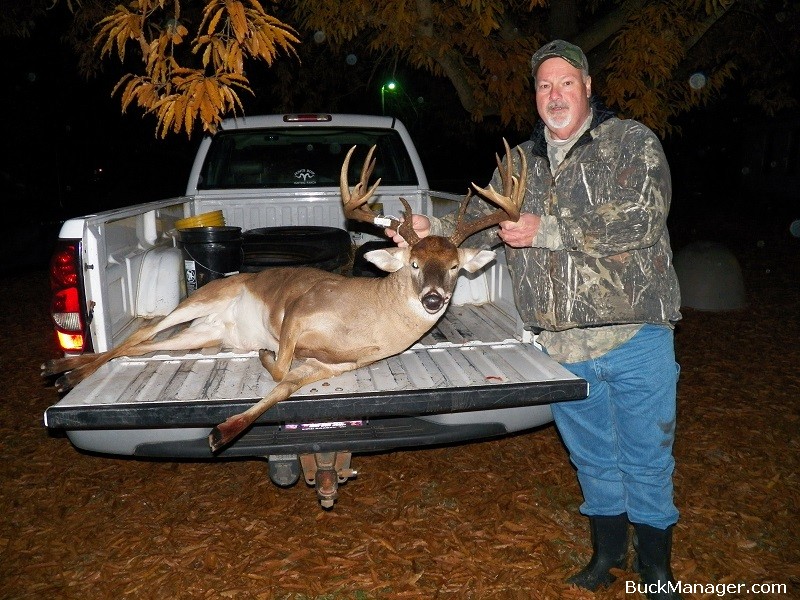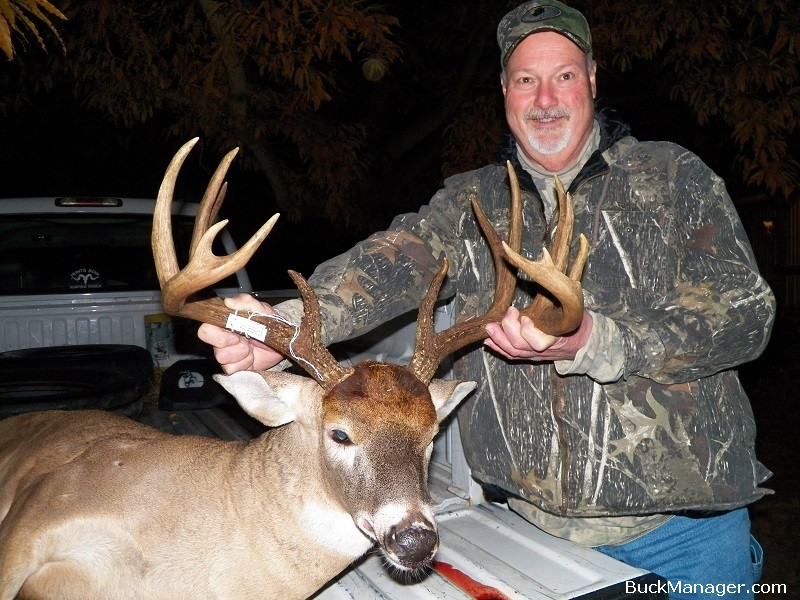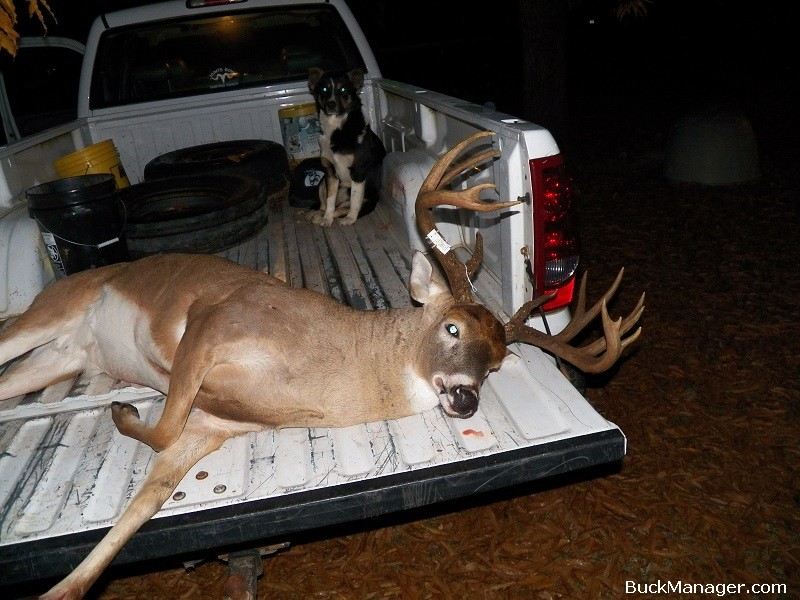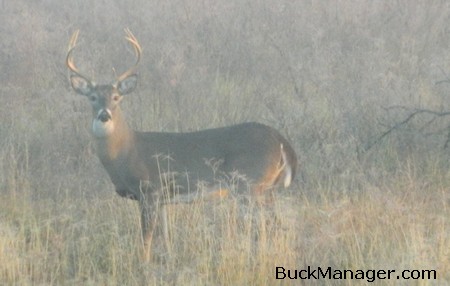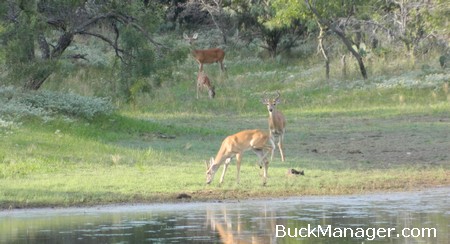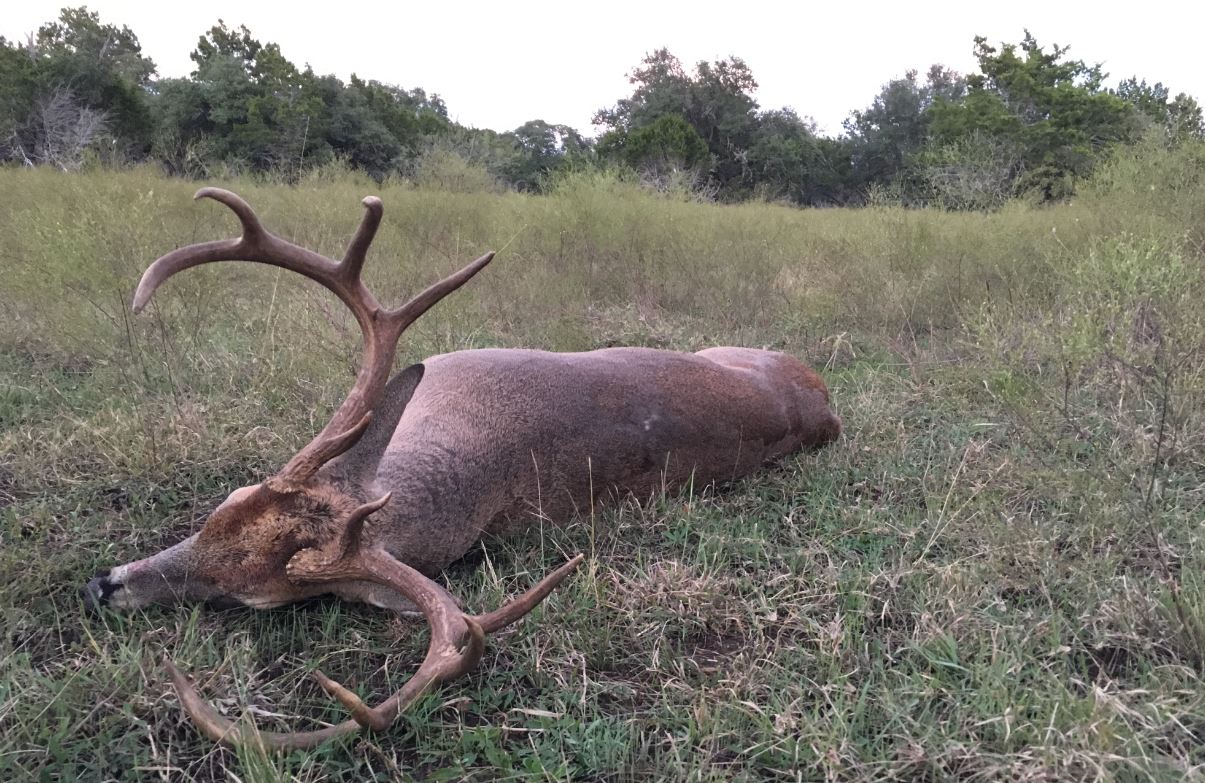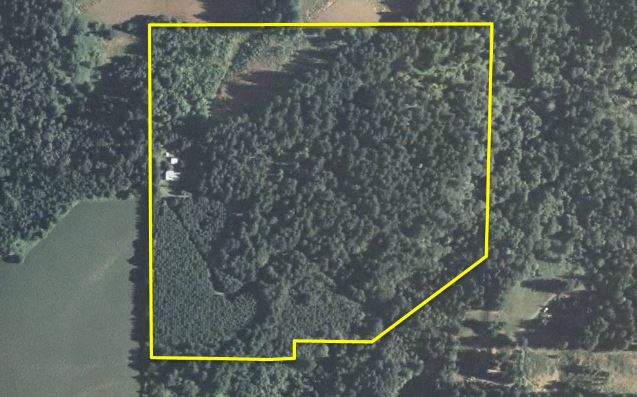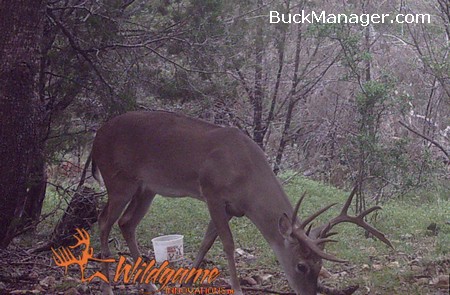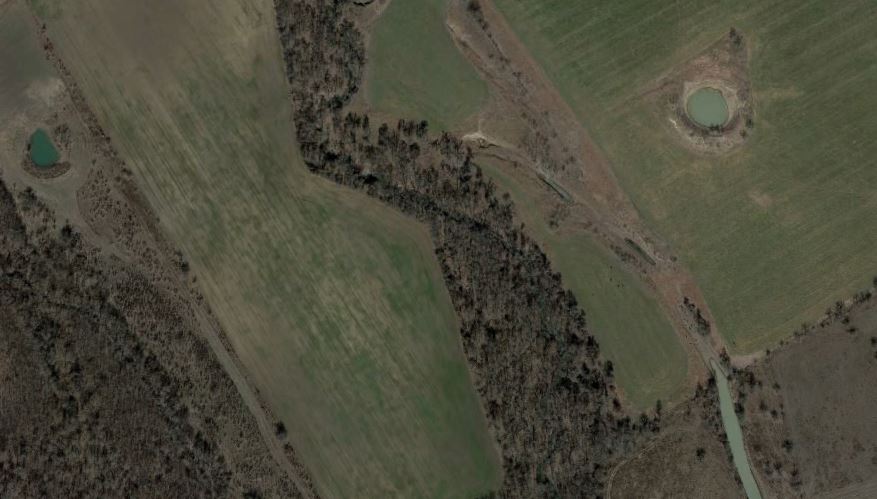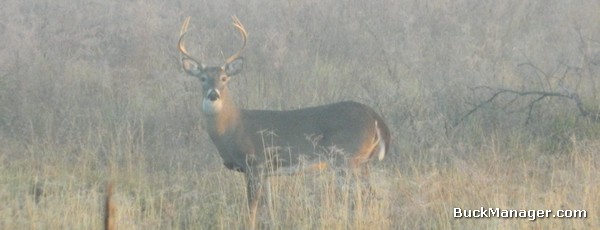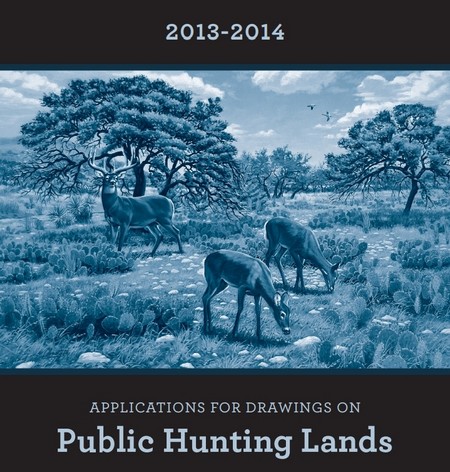There are many aspects to white-tailed deer hunting and management. The most exciting part is, of course, the hunting season itself. Every hunter dreams of a big whitetail buck stepping out in front of them, emerging from the wood line from seemingly out of thin air. It can happen to any hunter at any time, but to significantly up the odds of your dreams coming true you’ve got to do the work, put in the time and answer the bell when deer season rolls around. This is when having a combination of strong will, patience and the ability to age deer on the hoof becomes a very real part of harvest management.
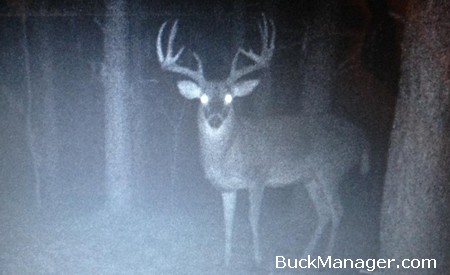
One Northeast Texas hunter had all of these characteristics in spades — and that allowed him to place his tag on a big Bowie County buck. Over the past weekend, Texas hunter Ricky Hunt bagged a whitetail buck that instantly became his personal best. Despite deploying a number of game cameras before and during the hunting season, Ricky had only managed to capture a single photo of the remarkable buck. That one photo proved to be motivation enough to keep Ricky in the woods. Ricky knew this buck was out there, somewhere.
Ricky Hunt: “I took this buck this past Sunday evening (December 8). We acquired a new lease about a mile from where we had been deer hunting the past few years. It is a area that is known for some good deer. My personal best buck was taken in this area a couple years back. He scored 137 4/8, a archery kill. We are about a mile from the Red River. A lot of farming, so the deer have good body size to them and good antlers.
Our place is all planted pine trees. A real challenge to hunt and to figure out any patterns to the deer. Most (99%) of our visibility is limited to about 40 yards. Deer sightings have been low because of this. If it wasn’t for game cameras it would have been hard to stick with it. I didn’t see a deer on stand during the month of October and well into November. The camera showed us some amazing bucks and one stood out above the rest.
The only lane we have on the place is a road they made to load logs. It is about 100 yards long and very close to a county road. I was reluctant to put a bowhunting blind on this lane because I was concerned when the leaves begin to fall that someone would see the blind from the road and it possibly get stolen. Putting that aside, I decided to put the blind on the lane in hopes of being able to see more deer. I haven’t used a rifle in years, but I decided I would take my rifle in case I saw a bruiser on the end of the lane.
Fast forward to Sunday evening. At dark thirty, a big bodied buck stepped out in front of me at 25 yards. The buck was so close and it happened so fast that I had a hard time getting the crosshairs on the buck. I shot him at 35 yards. I did not realize just how big this buck was until 30 minutes later when me and my son walked into the pines to find him. When we saw him we knew he was the big buck that we had on camera. To say the least, we were both ecstatic. This Bowie County buck is 20 4/8 inches wide, has 15 points and scores 165 1/8 B&C!”
It seems that no two properties are ever the same when it comes to the management of whitetail deer. Although the fundamentals of management remain the same, some will focus more on habitat management and others more on harvest management. It should be noted that every place that aims to grow healthier, bigger deer is involved in both aspects to some degree. Bucks can not reach their genetic potential if they do not have adequate nutrition. On the other side of the coin, bucks can not reach their genetic potential if they are shot when young. This can be tough for many hunters since good bucks are big even when they are young.
It takes trigger restraint to produce mature bucks and good groceries for them to grow big, but like most people deer get substantially wiser as they age. This makes hunting well-seasoned bucks much more difficult than the 2 and 3 year old deer that readily run into the middle of a fall food plot or to a timed feeder, especially in areas where deer receive substantial pressure during the hunting season. When asked about hunting deer in Bowie County, Ricky Hunt said there were several things that help them keep and hunt big deer on their property:
“1.We do not use spin cast feeders. In this part of the country deer won’t tolerate feeders, especially mature bucks. We will pour out corn on the ground. My biggest archery buck 137 4/8 P&Y was harvested this way.
2.We do not use four wheelers to go to our stands. We use them only to retrieve a buck or putting up a stand. We walk straight to our stand and straight out. Excessive walking or four wheeling will cause deer movement to shut down. We don’t want them to know we have been there.
3. If I look out and see my neighbors smoke from their chimney early in the morning go up and then start to settle closer to the ground, I don’t dare climb into a tree stand. The same will happen to your scent. My two biggest bucks to date have been killed using bow blinds. I have only one window open. This keeps it dark inside, but it also helps to contain scent. I have had many bucks and does walk within feet from me and never know I was there.
4. We use game cameras pre-season to survey what we have as for as bucks. We try and age them as close as we can. Last year, I passed on a wide 10 point. I did not take a buck last year, but I did not regret passing on that 10 point. He was young. Having game cameras out is a real motivator to sticking it out and putting as much time in the woods as possible. I had numerous pictures of my 137 4/8 archery buck and had only one of my 165 1/8 buck. Game cameras may not get pics of all your bucks, but you can get a good idea of what you have.
5. After deer season is over we do what I coined as ‘A Roll Call.’ We will put out as many game cameras as we have throughout our lease for at least a month. By doing this it gives us an idea of what bucks made it through the deer hunting season. This gives us a good idea of which bucks we can hope to see next season.”
